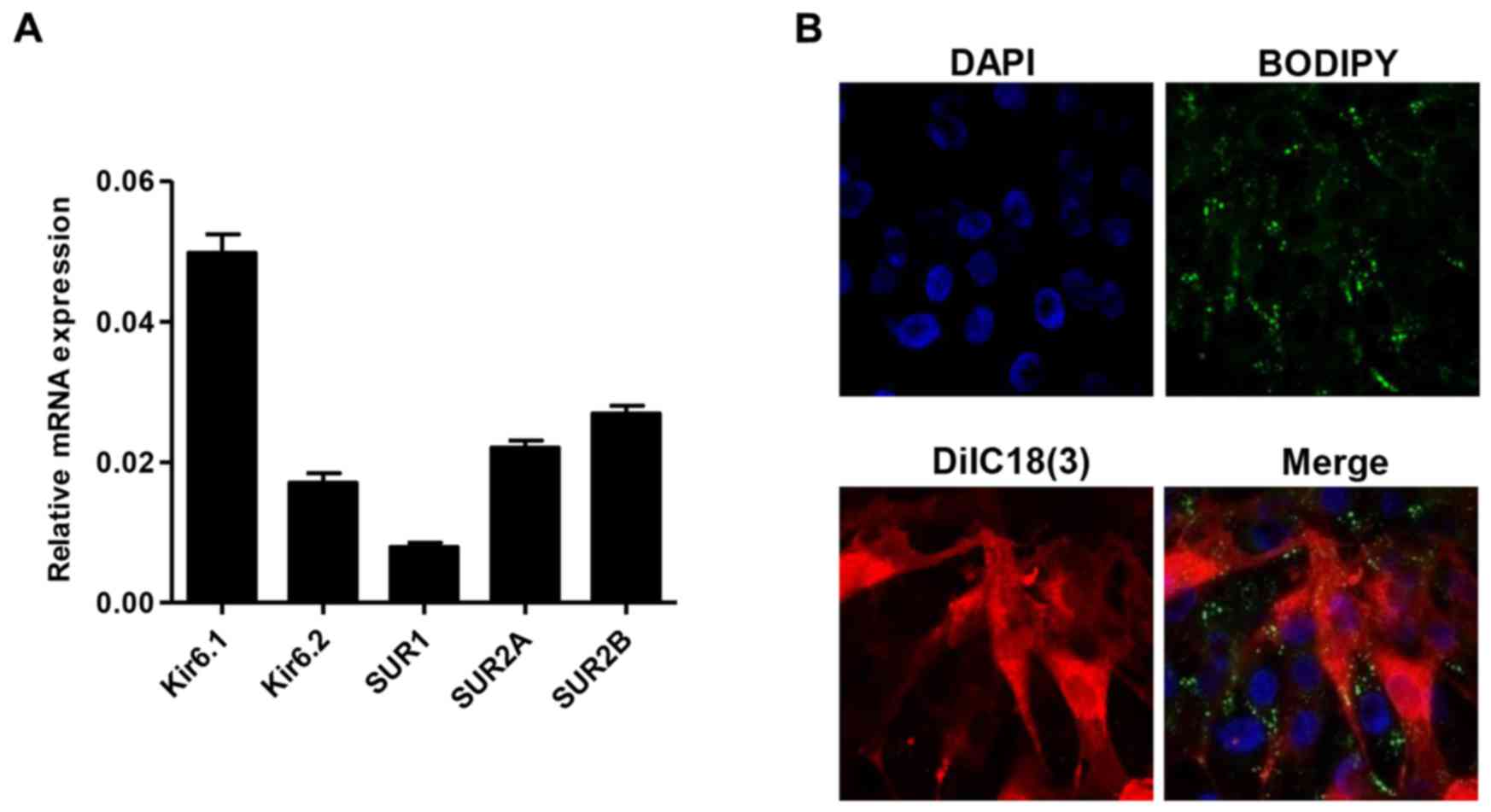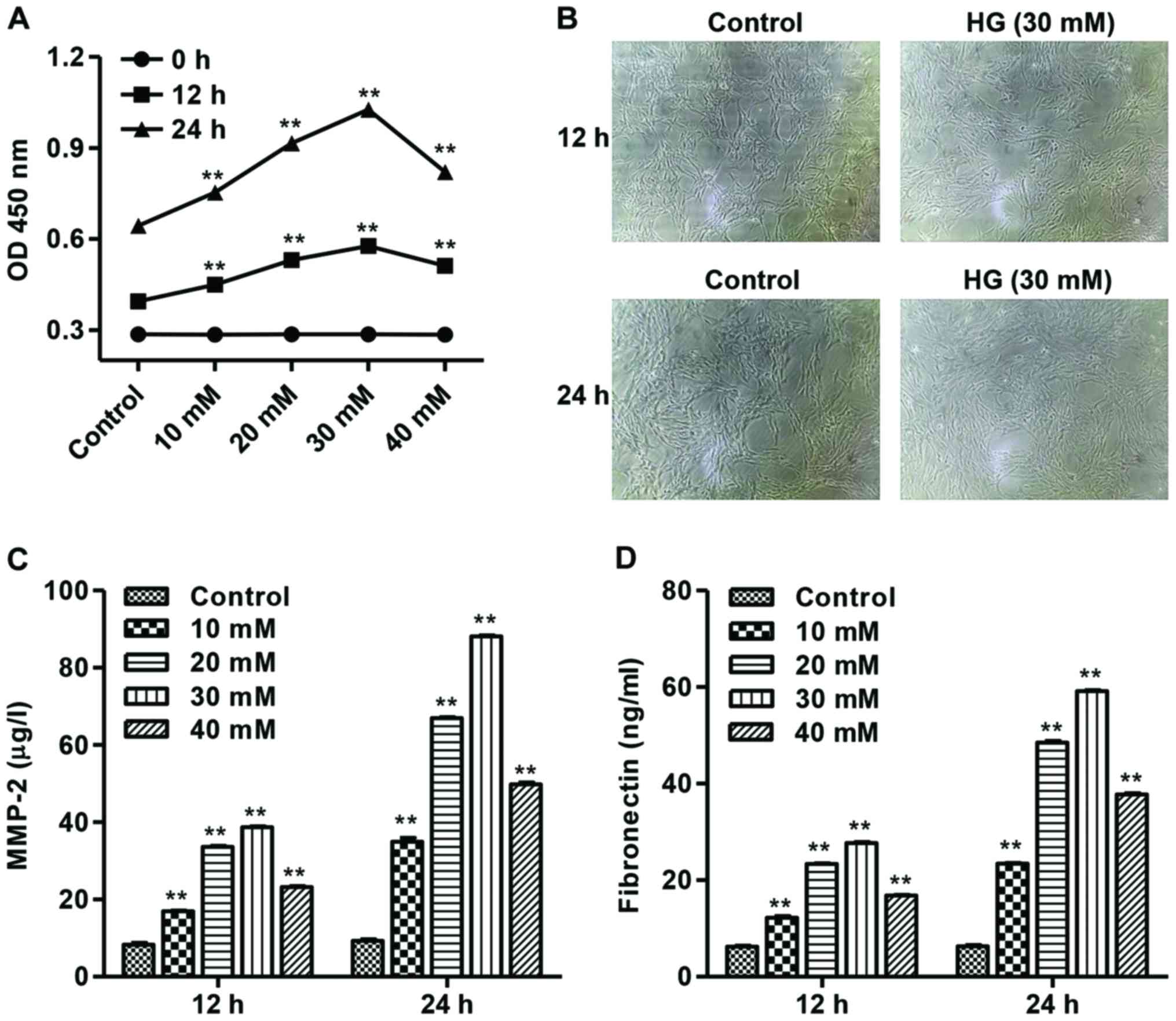|
1
|
Aghadavod E, Khodadadi S, Baradaran A,
Nasri P, Bahmani M and Rafieian-Kopaei M: Role of oxidative stress
and inflammatory factors in diabetic kidney disease. Iran J Kidney
Dis. 10:337–343. 2016.PubMed/NCBI
|
|
2
|
John S: Complication in diabetic
nephropathy. Diabetes Metab Syndr. 10:247–249. 2016. View Article : Google Scholar : PubMed/NCBI
|
|
3
|
Kolset SO, Reinholt FP and Jenssen T:
Diabetic nephropathy and extracellular matrix. J Histochem
Cytochem. 60:976–986. 2012. View Article : Google Scholar : PubMed/NCBI
|
|
4
|
Ruster C and Wolf G: The role of
chemokines and chemokine receptors in diabetic nephropathy. Front
Biosci. 13:944–955. 2008. View
Article : Google Scholar : PubMed/NCBI
|
|
5
|
Kikkawa R, Koya D and Haneda M:
Progression of diabetic nephropathy. Am J Kidney Dis. 41 Suppl
1:S19–S21. 2003. View Article : Google Scholar : PubMed/NCBI
|
|
6
|
Zhang L, Pang S, Deng B, Qian L, Chen J,
Zou J, Zheng J, Yang L, Zhang C, Chen X, et al: High glucose
induces renal mesangial cell proliferation and fibronectin
expression through JNK/NF-κB/NADPH oxidase/ROS pathway, which is
inhibited by resveratrol. Int J Biochem Cell Biol. 44:629–638.
2012. View Article : Google Scholar : PubMed/NCBI
|
|
7
|
Li X, Liu W, Wang Q, Liu P, Deng Y, Lan T,
Zhang X, Qiu B, Ning H and Huang H: Emodin suppresses cell
proliferation and fibronectin expression via p38MAPK pathway in rat
mesangial cells cultured under high glucose. Mol Cell Endocrinol.
307:157–162. 2009. View Article : Google Scholar : PubMed/NCBI
|
|
8
|
Tan RJ and Liu Y: Matrix
metalloproteinases in kidney homeostasis and diseases. Am J Physiol
Renal Physiol. 302:F1351–F1361. 2012. View Article : Google Scholar : PubMed/NCBI
|
|
9
|
Gharagozlian S, Svennevig K, Bangstad HJ,
Winberg JO and Kolset SO: Matrix metalloproteinases in subjects
with type 1 diabetes. BMC Clin Pathol. 9:72009. View Article : Google Scholar : PubMed/NCBI
|
|
10
|
Thompson J, Wilson P, Brandewie K, Taneja
D, Schaefer L, Mitchell B and Tannock LR: Renal accumulation of
biglycan and lipid retention accelerates diabetic nephropathy. Am J
Pathol. 179:1179–1187. 2011. View Article : Google Scholar : PubMed/NCBI
|
|
11
|
Burke MA, Mutharasan RK and Ardehali H:
The sulfonylurea receptor, an atypical ATP-binding cassette
protein, and its regulation of the KATP channel. Circ Res.
102:164–176. 2008. View Article : Google Scholar : PubMed/NCBI
|
|
12
|
Wheeler A, Wang C, Yang K, Fang K, Davis
K, Styer AM, Mirshahi U, Moreau C, Revilloud J, Vivaudou M, et al:
Coassembly of different sulfonylurea receptor subtypes extends the
phenotypic diversity of ATP-sensitive potassium (KATP) channels.
Mol Pharmacol. 74:1333–1344. 2008. View Article : Google Scholar : PubMed/NCBI
|
|
13
|
Teramoto N, Zhu HL, Shibata A, Aishima M,
Walsh EJ, Nagao M and Cole WC: ATP-sensitive K+ channels in pig
urethral smooth muscle cells are heteromultimers of Kir6.1 and
Kir6.2. Am J Physiol Renal Physiol. 296:F107–F117. 2009. View Article : Google Scholar : PubMed/NCBI
|
|
14
|
McTaggart JS, Clark RH and Ashcroft FM:
The role of the KATP channel in glucose homeostasis in health and
disease: more than meets the islet. J Physiol. 588:3201–3209. 2010.
View Article : Google Scholar : PubMed/NCBI
|
|
15
|
Yang SN, Wenna ND, Yu J, Yang G, Qiu H, Yu
L, Juntti-Berggren L, Köhler M and Berggren PO: Glucose recruits
K(ATP) channels via non-insulin-containing dense-core granules.
Cell Metab. 6:217–228. 2007. View Article : Google Scholar : PubMed/NCBI
|
|
16
|
Hu K, Huang CS, Jan YN and Jan LY:
ATP-sensitive potassium channel traffic regulation by adenosine and
protein kinase C. Neuron. 38:417–432. 2003. View Article : Google Scholar : PubMed/NCBI
|
|
17
|
Chen PC, Kryukova YN and Shyng SL: Leptin
regulates KATP channel trafficking in pancreatic β-cells by a
signaling mechanism involving AMP-activated protein kinase (AMPK)
and cAMP-dependent protein kinase (PKA). J Biol Chem.
288:34098–34109. 2013. View Article : Google Scholar : PubMed/NCBI
|
|
18
|
Masia R, Enkvetchakul D and Nichols CG:
Differential nucleotide regulation of KATP channels by SUR1 and
SUR2A. J Mol Cell Cardiol. 39:491–501. 2005. View Article : Google Scholar : PubMed/NCBI
|
|
19
|
Livak KJ and Schmittgen TD: Analysis of
relative gene expression data using real-time quantitative PCR and
the 2ΔΔCt method. Methods. 25:402–408. 2001. View Article : Google Scholar : PubMed/NCBI
|
|
20
|
Hong SH, Kyeong KS, Kim CH, Kim YC, Choi
W, Yoo RY, Kim HS, Park YJ, Ji IW, Jeong EH, et al: Regulation of
myometrial contraction by ATP-sensitive potassium (KATP) channel
via activation of SUR2B and Kir 6.2 in mouse. J Vet Med Sci.
78:1153–1159. 2016. View Article : Google Scholar : PubMed/NCBI
|
|
21
|
Zhang H, Flagg TP and Nichols CG: Cardiac
sarcolemmal K(ATP) channels: latest twists in a questing tale! J
Mol Cell Cardiol. 48:71–75. 2010. View Article : Google Scholar : PubMed/NCBI
|
|
22
|
Pu JL, Ye B, Kroboth SL, McNally EM,
Makielski JC and Shi NQ: Cardiac sulfonylurea receptor short
form-based channels confer a glibenclamide-insensitive KATP
activity. J Mol Cell Cardiol. 44:188–200. 2008. View Article : Google Scholar : PubMed/NCBI
|
|
23
|
Elrod JW, Harrell M, Flagg TP, Gundewar S,
Magnuson MA, Nichols CG, Coetzee WA and Lefer DJ: Role of
sulfonylurea receptor type 1 subunits of ATP-sensitive potassium
channels in myocardial ischemia/reperfusion injury. Circulation.
117:1405–1413. 2008. View Article : Google Scholar : PubMed/NCBI
|
|
24
|
Lefer DJ, Nichols CG and Coetzee WA:
Sulfonylurea receptor 1 subunits of ATP-sensitive potassium
channels and myocardial ischemia/reperfusion injury. Trends
Cardiovasc Med. 19:61–67. 2009. View Article : Google Scholar : PubMed/NCBI
|
|
25
|
Yuan P, Xue H, Zhou L, Qu L, Li C, Wang Z,
Ni J, Yu C, Yao T, Huang Y, et al: Rescue of mesangial cells from
high glucose-induced over-proliferation and extracellular matrix
secretion by hydrogen sulfide. Nephrol Dial Transplant.
26:2119–2126. 2011. View Article : Google Scholar : PubMed/NCBI
|
|
26
|
Rysz J, Banach M, Stolarek RA, Pasnik J,
Cialkowska-Rysz A, Koktysz R, Piechota M and Baj Z: Serum matrix
metalloproteinases MMP-2 and MMP-9 and metalloproteinase tissue
inhibitors TIMP-1 and TIMP-2 in diabetic nephropathy. J Nephrol.
20:444–452. 2007.PubMed/NCBI
|
|
27
|
Wang J, Huang H, Liu P, Tang F, Qin J,
Huang W, Chen F, Guo F, Liu W and Yang B: Inhibition of
phosphorylation of p38 MAPK involved in the protection of
nephropathy by emodin in diabetic rats. Eur J Pharmacol.
553:297–303. 2006. View Article : Google Scholar : PubMed/NCBI
|
|
28
|
Hopps E and Caimi G: Matrix
metalloproteinases in metabolic syndrome. Eur J Intern Med.
23:99–104. 2012. View Article : Google Scholar : PubMed/NCBI
|
|
29
|
Tarasov AI, Girard CA and Ashcroft FM: ATP
sensitivity of the ATP-sensitive K+ channel in intact and
permeabilized pancreatic beta-cells. Diabetes. 55:2446–2454. 2006.
View Article : Google Scholar : PubMed/NCBI
|
|
30
|
Liang W, Chen J, Mo L, Ke X, Zhang W,
Zheng D, Pan W, Wu S, Feng J, Song M, et al: ATP-sensitive K+
channels contribute to the protective effects of exogenous hydrogen
sulfide against high glucose-induced injury in H9c2 cardiac cells.
Int J Mol Med. 37:763–772. 2016.PubMed/NCBI
|














